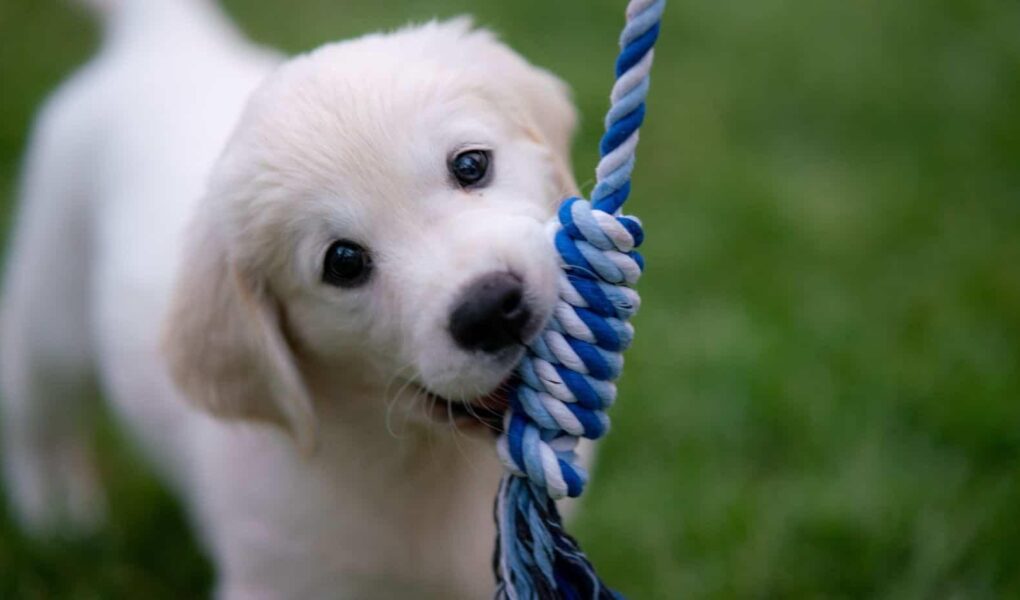The Whimsical Whine: Understanding Your Puppy’s Plea for Attention
As the sun dips below the horizon and the world begins to quiet down, a familiar sound breaks the stillness of the evening—the plaintive whine of a puppy yearning for attention. This high-pitched call can tug at the heartstrings of even the most stoic pet owner, igniting a mixture of concern and affection. But what lies behind those insistent whimpers? Is it a simple plea for companionship, or is there something deeper at play? In this article, we’ll delve into the world of puppy whining, exploring its various causes, the psychology behind this behavior, and how to respond effectively. By understanding the nuances of your furry friend’s vocalizations, you can foster a stronger bond and ensure a happier home for both of you. So, let’s embark on this journey to decode the language of puppy whines, transforming them from a source of confusion into a bridge of understanding.
Table of Contents
- Understanding the Reasons Behind Your Puppy’s Whining
- Helpful Techniques to Address Attention-Seeking Whining
- Creating a Balanced Routine for Your Puppy’s Emotional Needs
- Building Stronger Bonds Through Positive Interaction Strategies
- Q&A
- The Way Forward
Understanding the Reasons Behind Your Puppy’s Whining
Puppy whining is often a vocal expression of their needs or emotions, and understanding its underlying reasons can help foster a stronger bond between you and your furry companion. Some common motivations for those whines include:
- Attention Seeking: Puppies, like young children, crave interaction and may whine to get your notice. This can stem from boredom or a desire for playtime.
- Hunger: A hungry puppy might whine to signal that it’s time for a meal or snack.
- Discomfort: If they’re feeling unwell or uncomfortable, such as needing to go outside, they may whine to express their distress.
- Separation Anxiety: Puppies can become anxious when left alone, leading to whimpering or whining as a plea for your presence.
Recognizing these triggers is key to addressing the behavior. You can maintain a log to track patterns in your puppy’s whining, which may bring clarity to what provokes it. Consider the following table to help you understand the whines better:
| Cause | Action |
|---|---|
| Attention Seeking | Engage in playtime or training sessions to fulfill their need for interaction. |
| Hunger | Establish a feeding schedule to meet their nutritional needs on time. |
| Discomfort | Check their environment for anything out of the ordinary and ensure they’re comfortable. |
| Separation Anxiety | Implement gradual desensitization to help them adjust to being alone. |
Helpful Techniques to Address Attention-Seeking Whining
To navigate the challenge of a puppy’s attention-seeking whining, establishing a consistent routine is essential. Predictability provides your furry friend with a sense of security, reducing the impulse to vocally demand attention. Consider implementing a daily schedule that includes dedicated playtime, training sessions, and relaxation periods. This way, your puppy learns that quality time is an anticipated reward rather than an on-demand service. Additionally, utilizing enrichment activities or interactive toys can keep them engaged and mentally stimulated, helping to divert attention away from whining.
Furthermore, positive reinforcement plays a crucial role in modifying your puppy’s behavior. When your puppy is calm and quiet, reward them with treats or affection to reinforce that behavior. In contrast, if you respond to whining, even to shush them, it might inadvertently teach them that whining is a successful strategy for gaining attention. Here are some effective strategies to consider:
- Ignore the Whining: Wait until the puppy settles down before offering attention.
- Teach “Quiet”: Use commands to train them to remain quiet before rewarding.
- Redirect Attention: Offer toys or engage in a game when they start to whine.
- Gradual Desensitization: Slowly increase the time they spend alone to build independence.
Creating a Balanced Routine for Your Puppy’s Emotional Needs
Addressing your puppy’s emotional needs requires a thoughtfully structured routine that balances exercise, mental stimulation, and cozy downtime. Start by integrating a variety of activities throughout the day to keep your puppy engaged and content. Consider these elements:
- Regular Walks: Ensure daily outdoor walks to explore, sniff, and socialize.
- Training Sessions: Short, positive reinforcement training sessions can stimulate their mind and reinforce good behavior.
- Interactive Toys: Use puzzle toys that challenge your puppy and encourage independent play.
- Interactive Playtime: Dedicate time for fun games like fetch or tug-of-war to strengthen your bond.
- Calm Rest Periods: Schedule quiet moments to help your puppy relax and recharge.
Establishing a consistent daily routine can greatly alleviate your puppy’s need for attention, keeping them emotionally balanced. Consider tracking their activities to identify patterns and areas for improvement. Here’s a simple schedule you could adapt:
| Time | Activity | Duration |
|---|---|---|
| 7:00 AM | Morning Walk | 30 mins |
| 8:00 AM | Breakfast & Training | 20 mins |
| 10:00 AM | Playtime | 30 mins |
| 12:00 PM | Nap Time | 1 hour |
| 3:00 PM | Interactive Play with Toys | 30 mins |
| 6:00 PM | Evening Walk | 30 mins |
| 8:00 PM | Wind Down & Cuddle Time | 1 hour |
Building Stronger Bonds Through Positive Interaction Strategies
Puppy whining for attention is a common behavior that often signals a need for connection and interaction. To transform this behavior into an opportunity for building a stronger bond, we can employ several positive interaction strategies. Understanding the underlying reasons for the whining is crucial. Puppies may whine due to hunger, boredom, or the desire for companionship. By addressing these needs proactively, owners reinforce a positive connection. Consider the following strategies to engage positively when your puppy begins to whine:
- Provide physical affection: A gentle pat or cuddle can reassure your puppy and fulfill their need for closeness.
- Redirect their energy: Engaging them in playtime or providing interactive toys can distract them and reduce whining.
- Establish a routine: Consistent feeding, play, and training schedules can provide comfort and security, reducing anxiety-driven whining.
Moreover, maintaining a calm demeanor is key when responding to whining. When a puppy sees their owner react positively to their calls, they learn that attention-seeking behavior works, but it’s essential to reinforce these interactions with the right cues. Utilizing praise and rewards when they stay quiet can help teach them to express their needs in a more balanced way. Keeping track of your puppy’s behavior can also be beneficial. You might use a simple table to note when whining occurs and the responses provided:
| Time | Behavior | Response |
|---|---|---|
| Morning | Whining after wake-up | Playtime + Breakfast |
| Afternoon | Whining during alone time | Interactive toy + Cuddle session |
Q&A
Q&A: Understanding Your Puppy’s Whining for Attention
Q1: Why does my puppy whine when I’m nearby?
A1: Puppies often whine as a way to communicate their needs or desires. When they’re near you, they may be seeking attention, play, or reassurance. Whining can be their way of saying, “Hey, look at me! I need some love!”
Q2: Is it normal for puppies to whine?
A2: Absolutely! Whining is a normal behavior in puppies. It’s part of their development as they learn to express themselves. Just like a baby, your puppy uses vocalizations to convey feelings, whether it’s sadness, excitement, or the desire for companionship.
Q3: How can I differentiate between whining for attention and whining for other reasons?
A3: Paying attention to the context is key! If your puppy is whining while wagging their tail, jumping, or bringing you toys, they’re likely asking for attention or play. If the whining is accompanied by whimpering or a more distressed tone, it could indicate discomfort, fear, or a need to go outside. Observing their body language will provide helpful clues.
Q4: Should I give in to my puppy’s whining?
A4: While it can be tempting to respond immediately to your puppy’s pleas, it’s important to establish boundaries. If you consistently respond to their whining, they may learn that this behavior gets them what they want. Try to ignore the whining until it stops, and then reward them with attention when they are calm. This approach helps them learn that silence is a more effective way to gain your affection.
Q5: What can I do to reduce excessive whining for attention?
A5: Engaging your puppy in regular play and mental stimulation can significantly reduce whining. Make time for daily exercise and provide interactive toys to keep them busy. Additionally, establishing a routine can help your puppy feel more secure and less likely to seek constant attention. Praise and reward them when they are quiet to reinforce calm behavior.
Q6: Could my puppy’s whining be a sign of a bigger issue?
A6: If your puppy’s whining seems excessive or is accompanied by other concerning behaviors, it’s worth consulting a veterinarian or a professional dog trainer. Whining can indicate anxiety, loneliness, or even physical discomfort. Early intervention can help address any underlying issues and ensure your puppy’s well-being.
Q7: How long can I expect my puppy to whine for attention?
A7: Each puppy is unique, and some may whine for attention more than others. With consistent training and patience, many puppies will outgrow excessive whining as they learn appropriate ways to express their needs. Typically, expect the behavior to lessen as your puppy matures and adjusts to their environment.
Understanding your puppy’s whining can lead to a deeper bond between you and your furry friend. With patience and proper guidance, you can navigate this phase smoothly and enjoy a harmonious relationship with your playful companion!
The Way Forward
addressing a puppy’s whining for attention can be a nuanced journey filled with patience and understanding. By recognizing the reasons behind this behavior and employing positive reinforcement techniques, you can foster a confident and secure companion. Remember, every whine is a window into your puppy’s world, a call for connection and reassurance. As you navigate this phase of their upbringing, may you find joy in the moments of discovery and growth, strengthening the bond between you and your furry friend. After all, a little understanding today goes a long way toward a harmonious tomorrow. Happy training!


